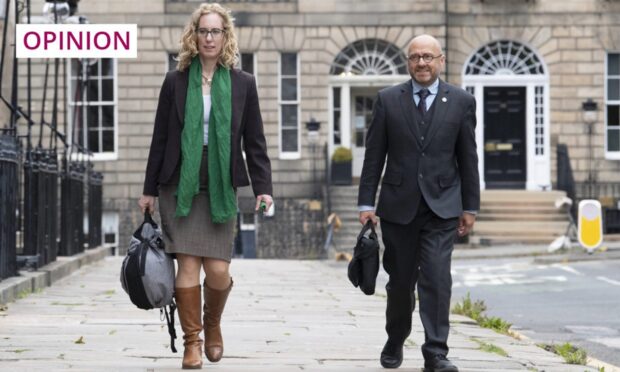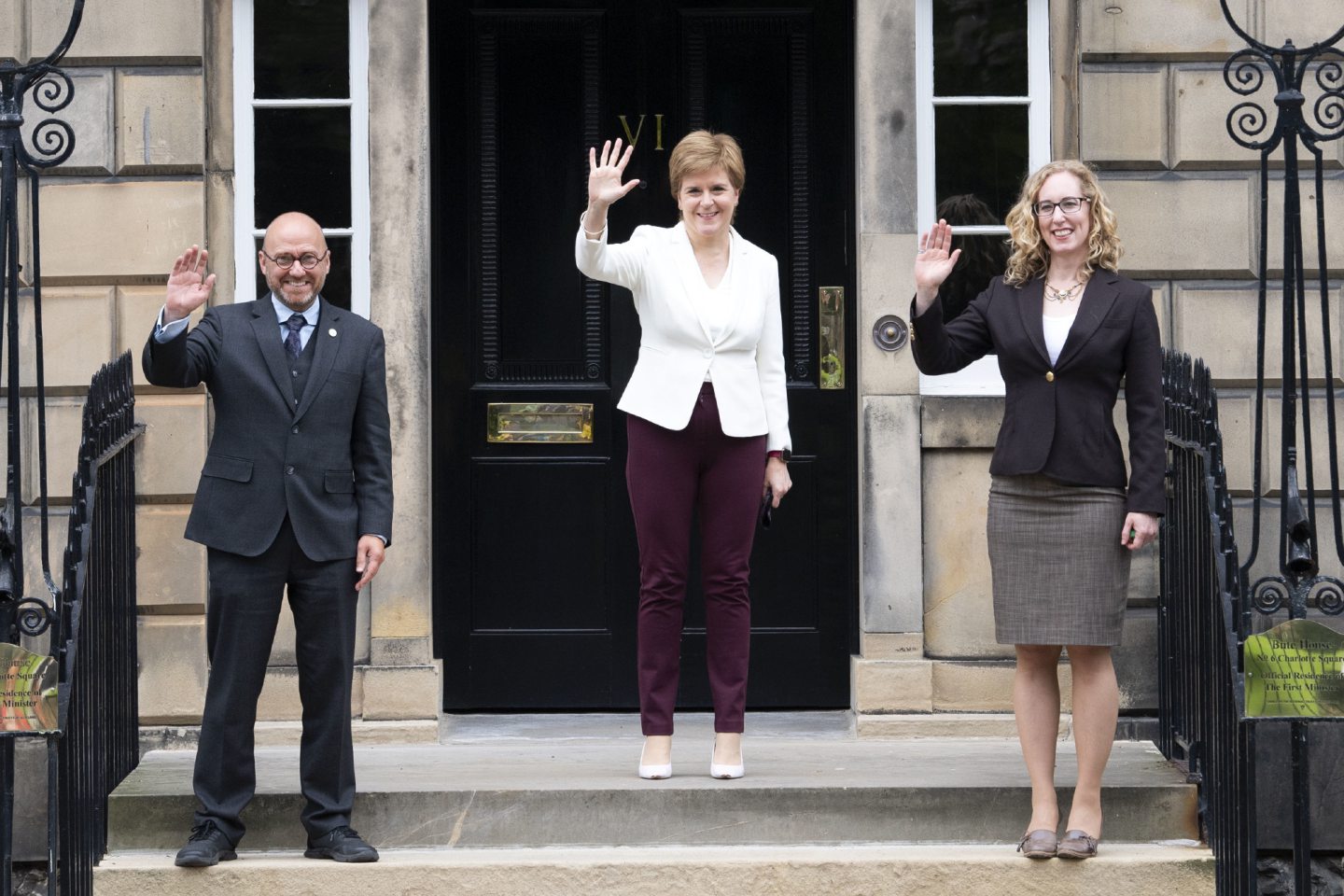By tradition, it’s the smaller party that suffers from entering into a coalition.
The little guy gets bullied by the big guy, emerges bruised and battered, and pays a heavy electoral price.
The Lib Dems still haven’t recovered from their decision to join up with David Cameron’s Conservatives in 2010. The deal between the two, which saw Nick Clegg junk his opposition to university tuition fees and sign up to the Tory programme of austerity, ruined the Lib Dems’ reputation on the left and, more broadly, undermined voter trust.
In 2010, the party had 57 seats. Today, it has just 11, and struggles for national attention and relevance. The SNP, for now at least, has replaced it as the UK’s third largest party.
The Scottish Greens seem to be proving an exception to this rule, though. They entered coalition with the Nats at Holyrood in August 2021, under the Bute House Agreement, which gave the tiny party, with its eight MSPs, the keys to government in the form of ministerial jobs for its co-leaders.
Ever since, Patrick Harvie has been minister for zero carbon buildings, active travel and tenants’ rights, and Lorna Slater minister for green skills, circular economy and biodiversity. Impeccable job titles for Green politicians. You’ll no doubt have your own views about how they have performed.
Joining a government that had already been in office for 14 years was a risk. The SNP’s popularity has entered something of a tailspin following the departure of Nicola Sturgeon and her replacement by Humza Yousaf. There’s a growing sense that Scotland has had quite enough of this administration and needs a refresh.
The Greens have been enthusiastic contributors to this decline – if Harvie has delivered active travel, it is in the direction of the opposition benches for Yousaf and Co. Much of what has gone wrong has been down to the pursuit of a heavy-handed and half-baked agenda that seems to owe more to the radical values of the coalition’s smaller party than it does to the long, pragmatic traditions of the larger one. From the ill-fated gender recognition reform to the catastrophic bottle return scheme, a Green hand can usually be seen behind a crisis.
And, yet, it appears that, come the Holyrood election in 2026, the SNP will take the blame, and the fall. Polls suggest the Greens will retain their current numbers in the Scottish parliament – they might even go up a bit if they can pull in left-wing, pro-independence voters who are sick of the Nats and can’t bring themselves to support Labour or Alba, the latest vehicle for Alex Salmond’s ego.
Yousaf has doubled down when he should have got out
It feels more than a little ironic, therefore, as well as being highly amusing, that it is the Greens who are now considering an early departure from the partnership. A meeting has been called next month to debate the future of the coalition, after party members revolted over the government’s decision to scrap its target of reducing carbon emissions by 75% by 2030.
Given that Yousaf has bent over backwards to accommodate the Greens and their often extreme and unpopular policies, it is delicious that it is the latter who are openly worried about collateral reputational damage from remaining linked to the Nats. One member was quoted yesterday saying that “there is the possibility that Humza Yousaf will go after the UK general election. So would it make more sense for us to leave now and repair any reputational damage that we’ve had within the next two years, or wait and be potentially kicked out of government by whoever becomes first minister?”
As with so much else since he has taken office, Yousaf seems to be losing control of this issue
As with so much else since he has taken office, Yousaf seems to be losing control of this issue. At the outset of his leadership, he had the opportunity for a reset of government that would have involved rescinding the Bute House Agreement, ditching much of the policy baggage left behind by Sturgeon, and governing as a minority party focused on public services and the economy. There were plenty of senior people in the SNP who wanted him to do just that.
Instead, the FM doubled down on the inter-party love affair, rarely missing an opportunity to talk up the importance of the coalition, even as his personal poll ratings slide downwards. At the weekend, he was still insisting he “really values” the power-sharing deal.
SNP is curtailed by its junior partner
The Greens, somehow, have the SNP dancing on the end of a wire. Yousaf’s inability to show firm leadership, and his almost craven approach to maintaining the coalition, leaves him and his party looking weak and lacking autonomy.
For the sake of a majority at Holyrood, the Nats’ freedom of movement is curtailed by their junior partner. The Bute House Agreement was also intended to advance the case for independence. That has hardly worked out, either.
One is left wondering what, any longer, is in this deal for the SNP? And speculating about just how much the real-world damage is outweighing any theoretical benefits. It is the Greens who are showing independent spirit and pursuing their own self-interests. The tail consistently wags the dog, and the dog looks ever more cowed and flea-bitten.
Chris Deerin is a leading journalist and commentator who heads independent, non-party think tank, Reform Scotland


Conversation